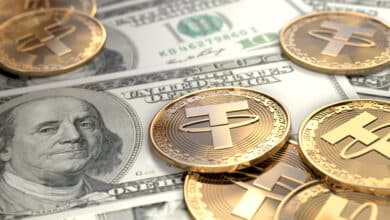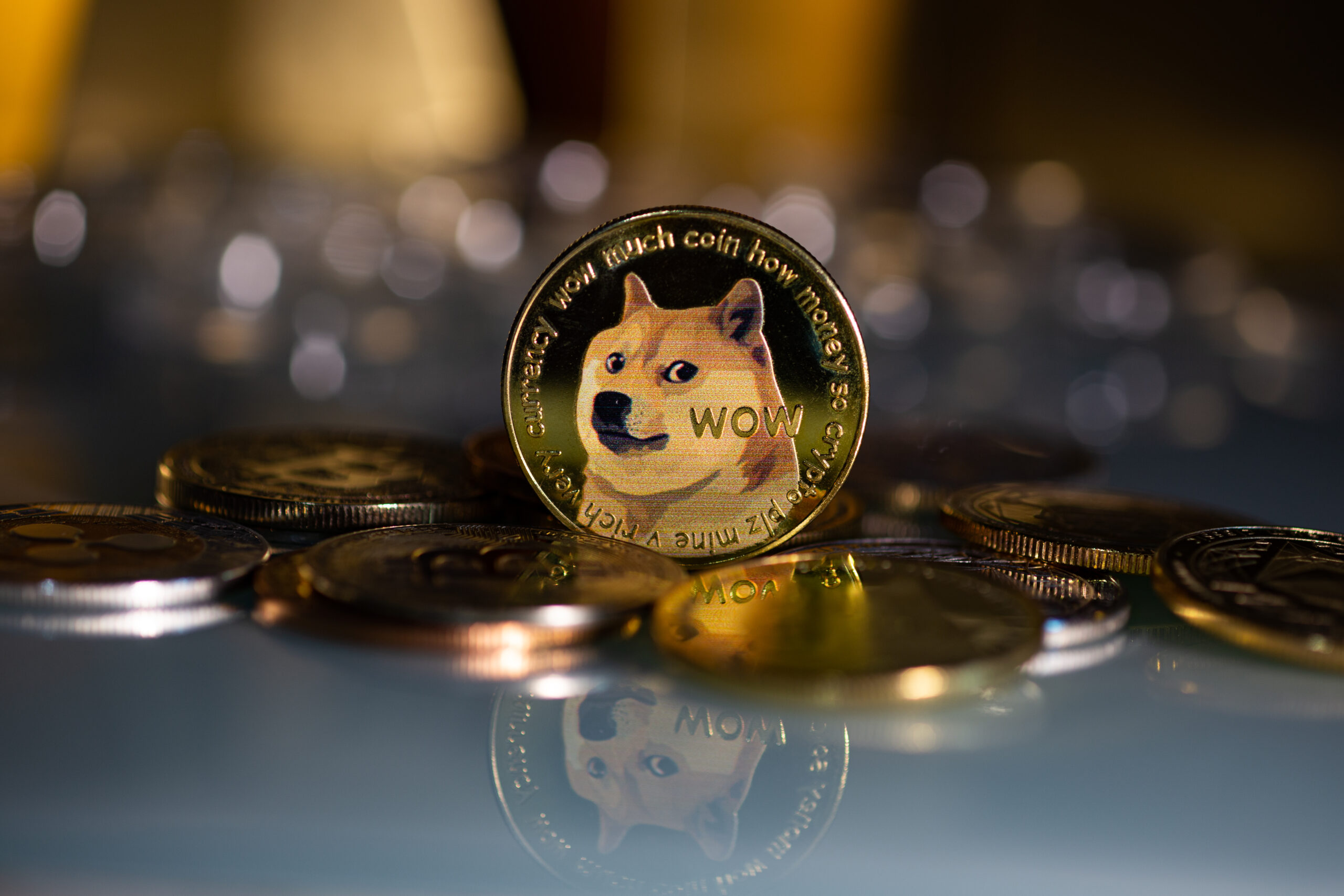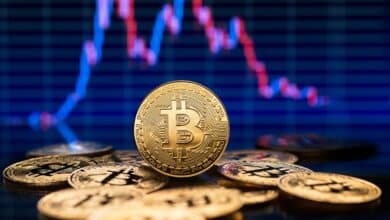A Complete Guide To Crypto Derivative Trading

Introduction
When it comes to trading, most people are aware of the various trading products such as stocks, cryptocurrencies, commodities, real estate, etc. However, there is a whole new array of investment products that investors can use to generate profits.
These investment products are known as derivatives. They are intrinsically and functionally different and offer different advantages to the investors to increment their portfolios. This article is a comprehensive guide about derivatives, how it works, their various classifications, and their limitations for the reader.
What is Derivative Trading?
Before diving into derivatives trading, investors should focus their attention on understanding what a derivative is first. A Derivative is a type of investment product that allows the investors to track the underlying value of an investment product without owning it directly.
It means that the derivatives are like a trade contract that allows the investors to invest in the value of an asset class by tracking its price movements in the market and issuing predictions on its prices. Derivatives can track the value of several underlying products, such as cryptocurrencies, commodities, stocks, and others.
Investors can purchase derivatives from dedicated exchange markets and sometimes from OTC (over-the-counter) or decentralized platforms.
How does Derivative Trading Work?
Investors make predictions of price change for the underlying asset that the derivative is tracking. Investors who deal in derivative markets need to have a command of the technical and fundamental analysis of the market.
They make buying and selling decisions based on price predictions for the future. In some cases, investors also use derivatives to hedge inflation and mitigate the risks associated with direct investment in a particular asset class.
Based on the incrementing or decrementing price projections, the consumers can create long or short positions using derivatives based on uptrend or downtrend projections. At the same time, consumers can also hedge their long-term positions using derivatives.
Origin of Derivative Trading
Modern-day trading practices are the evolved form of trading practices developed by the earliest human civilizations a hundred thousand years ago. Up until 4500-4000 BCE, the people used a barter system and nominated goods such as grain, wine, and other objects as the medium of exchange.
The ancient city of Sumer, particularly the Tigris and Euphrates river regions, show remnants of the earliest human writing and mathematics. These technologies were used to create the most primitive accounting systems and to record financial transactions. At the same time, Sumerians also used clay tokens that were stored in clay jars or vessels for safekeeping.
These clay tokens were nominated and used to represent the trading commodities. Therefore, historians have declared that these were the earliest form of futures contracts and financial derivatives. The formal record of a derivative financial transaction is found in ancient Greece around 600 BCE.
The pre-Socratic philosopher Thales of Miletus is thought to be a derivatives trader of olive oil. He used his knowledge of astronomy to predict the output of the olive oil farms and positioned himself to gain profits by issuing incremental predictions about the yield.
In the same manner, the people of ancient Athens used shipping contracts based on pricing, volume, and commodity classifications that resemble forward contracts.
The traders of Medieval Europe used fair letters for purchase or sell orders of agricultural commodities. Buyers were able to make bulk purchases using credit letters while sellers stocked their merchandise are regional costs. The merchants submitted their letters to the local goldsmiths to deposit money, and these goldsmiths eventually transformed into banking enterprises.
The first dedicated secondary market for commodity trading was established in Eighteenth Century feudal Japan. These markets also carry out trade contracts using clearinghouses. Therefore, the Dojima Rice Exchange is often attributed as the first-ever futures trading market. Likewise, the Chicago Board of Trade (CBOT) was founded in North America under a democratic government system in 1848.
Leveraged Trading with Derivatives
There is another extension of the trading style that is usually combined with derivatives trading. This is called leveraged trading. Leveraged trading entering into buy or sell positions based and issuing projections regarding their prices going up or downwards.
However, the traders use margins or deposits when they are working with leveraging trade. In this manner, the investors are trading an asset without owning it directly. Therefore, the profits for the traders are going to depend on the direction of the market. The main difference added with leveraging is that the profit or loss ratio is amplified significantly in comparison to purchasing the underlying asset class directly.
In simple words, leveraged trading commences trades using borrowed funds and maintains the collateral to avoid a margin call.
Types of Derivative Trading
There are several types of derivative trading types that the reader can learn and use to diversify their investment portfolios. Some of the most popular derivatives trading options are given as under:
Spread Betting
Spread betting is the simplest form of derivative trading. The traders do not purchase an asset directly but place bits on their future price projections. They invest in a derivative contract that contains their price projections for the underlying asset. If the investors bet that the price of the asset is going to appreciate, they have to generate a long position.
On the other hand, if the asset is expected to go down, they create short positions or sell a contract. Rather than generating profits based on the cost and sell difference for the asset, the investors make money if their predictions are correct. If the asset keeps moving up, the long-positioned investors earn points.
In the same manner, if the assets go down, the investors with short position derivative contracts gain points. Spread betting is all about confirming the direction of the price movement with accuracy to make profits.
Futures
Futures are one of the most common and most talked about derivatives trading products. A futures contract allows the investors to create a contract that contains the future price projections of an asset class.
Furthermore, every futures contract contains a predetermined date after which it expires. The futures holder is under the legal obligation to make use carries out sales or purchases of the asset at the predetermined prices after the expiration date arrives.
If a futures bets that the prices of Bitcoin are going to increase after a week to $20K, it means that the owner of the futures has to sell Bitcoins after the week to the contract holder at $20K regardless of the market prices.
Options
Options and futures trading contracts are two types of trading contracts, such that both track the value of an underlying asset. Furthermore, both futures and options are designed as promissory notes that contain a price projection or prediction for its underlying asset concerning time.
However, options traders do not have the legal obligation to sell or purchase an asset after the predetermined trading period has passed. Another similarity between Futures and Options contracts is that both can track the price movement of trading products like cryptocurrencies, equities, forex, ETFs, and even indices.
Cash Settlements of Futures
Cash settlement future is a type of future contract where the settlement of the contract is not performed by trading said the number of underlying assets. For example, a futures contract betting on 10 kilograms of gold price hike for a determined price after a given period does not implicate the investors to deliver 10 KG of gold for settlement.
Futures traders are mostly speculators who agree to close the contract using cash equivalent. They ensure to unwind their contracts before expiration data with an offsetting trade. It shows that futures trading is more about accounting cash flow rather than depending on the economic dynamics of its underlying assets.
Some other common types of futures trading contracts are weather futures, stock index futures, interest rate futures, and volatility futures, among others.
Forwards
Forward contracts are very much like futures contracts, but the only difference is that they trade on OTC or Over Counter platforms. As mentioned before, OTC markets fall outside of the purview of the centralized, regulated, and traditional exchange markets. Additionally, when a forward contract is generated, the investors have the option of customizing the terms, settlement conditions, and even size of the forward contract.
Since Forward contracts are OTC, it also means that credit risk for these is higher than other derivatives options. Credit risk is the probability that the participants of a financial contract might not be able to hold their part of the bargain.
Also, the forward contract holders can offset their counterparty risks with other counterparty risks that further increase the associated lapse probability for the said contract.
Swaps
Swaps are lesser-known types of derivatives contracts. Swaps allow investors to jump from one type of derivative to another. For example, interest swaps can help debt holders with a variable interest rate contract to a fixed interest rate contract. Swaps are most used in mortgage bonds and cash flows to prevent the potential of default.
However, swaps also carry a heavy amount of counterparty risk. The 2008 financial crisis was the result of the swaps that created massive credit crises and deluged the housing markets.
CFD Trading
CFD, or Contract for difference, is a specialized type of derivative contract. The contract is very similar to spread betting. However, in this option, the traders agree to pay each other the difference between the opening and closing prices of the asset under question.
In this derivative contract, the investors are not purchasing or selling the actual trading product directly but only placing bets on the difference of a given asset within a specified time bracket.
Types of Derivative Trading Stances
The mechanics of derivatives trading is a little technical and more complicated than a simple sell and purchase trade. Therefore, investors can learn more about this trading method by taking a look at different trade stances that explain scenarios in Derivatives Trading. Here are some examples for a better explanation:
Long Call
When an investor predicts that the price of a given asset is going to increase the purchasing or go long on owning the asset, the position is known as a long call.
The payoff for a long call holder is going to be positive when the market value of the asset is going to increase in comparison to the exercise price and remains greater than the premium paid on the said call.
Long Put
When an investor projects that the prices of an asset are going to decrease they buy or go long the right to sell or put. Such a derivative stance is called long put.
The payoff for the long put holder is going to be positive when the market value moves below the exercise price and remains greater than the premium paid on the put.
Short Call
When the investors are assured that the prices for a said asset are going to decrease, they sell or create a call. At the same time, the investors create short positions to generate profit from the projected market movement.
The payoff for the writer of the call is going to be positive under the circumstance when the market value of the asset moves below the exercise prices and remains greater than the premium on the short-call contract.
Short Put
The last possible scenario is when the traders believe that the prices of an asset are going to increase and they sell or write a put. The writer of the put is going to experience a positive payoff if the prices rise above the exercise price and the total profits remains greater than the premium paid on the put contract.
Advantages of Derivatives Trading
Lock on Prices
With derivatives contracts, traders can rise above the volatile forces of the markets. In this manner, the consumers do not have to worry about the ever-changing nature of the market. However, it does not means that the investors should place random bets using contracts as it can result in increasing their incurred trading risks.
At the same time, the investors do not have to stay glued to the market analysis because the price points are already locked and static in a derivatives trade contract.
Protection from Unwarranted Market Movements
Even the most experienced and well-versed investors do not have a 100% rate of success in trading predictions. The best this investor can do is to look at the fundamentals and technical factors to come up with close enough projections for market movements.
Therefore, the investors can seek refuge in the derivatives contract that safe them from getting into losses based on unforeseen market changes. The traders can hedge their investments from unwarranted market changes and unlikely variables.
Risk Mitigation
Investing is a risky business. However, when an investor can get a full grasp of derivative contracts, it entails that their ability to place winning bets in the market also increases. They can dodge the market risks and bend the headwinds of fortune in their direction.
Therefore, derivatives trading is often seen as an effective tool that grants risk mitigation advantages to investors.
Limitations of Derivative Trading
Time Fluctuations for Contract Expiration
Although derivatives contracts are very beneficial for investors who have spent some time studying them, there is never a 100% guarantee of success. Traders are always going to be in a crunch due to the time limit factor that is associated with derivatives contracts.
Therefore, derivatives traders can feel contrasted and limited by the time that exposes them to the market movements and depend on good luck for suitable timing.
Underlying Asset Costs
The cost of the underlying asset is going to increase the expenses for the derivatives contract holders. Therefore, the traders cannot create derivatives contracts for any given asset without reflecting on the cost of holding the underlying asset under their possession.
In many cases, once the underlying asset reserves are committed to a derivatives contract, it means that the investors who are holding them cannot sell or purchase them to make a profit. Therefore, many derivatives traders use offsetting contracts for alternative settlements such as cash, etc.
Interest Rates
Interest or premium paid after each settlement of a derivative contract can be hefty. The traders must watch the premium rates and calculate them in advance to make sure that it does not inflate exponentially during the derivatives trade period.
As visible from all the above derivatives trading stances, the profit margins for the traders can only remain positive if they are not cut down by the derivatives premium costs.
Conclusion
Derivatives contracts are both easy and risky. Depending on their different types, the credit risk can increase or decrease for the investors. It is important to note that in most cases, the traders take into account all the legal and technical aspects of the market before dealing in any derivatives contracts. Derivatives are a great way of mitigating risks and using unfavorable market conditions to make profits.
Tokenhell produces content exposure for over 5,000 crypto companies and you can be one of them too! Contact at info@tokenhell.com if you have any questions. Cryptocurrencies are highly volatile, conduct your own research before making any investment decisions. Some of the posts on this website are guest posts or paid posts that are not written by Tokenhell authors (namely Crypto Cable , Sponsored Articles and Press Release content) and the views expressed in these types of posts do not reflect the views of this website. Tokenhell is not responsible for the content, accuracy, quality, advertising, products or any other content or banners (ad space) posted on the site. Read full terms and conditions / disclaimer.







